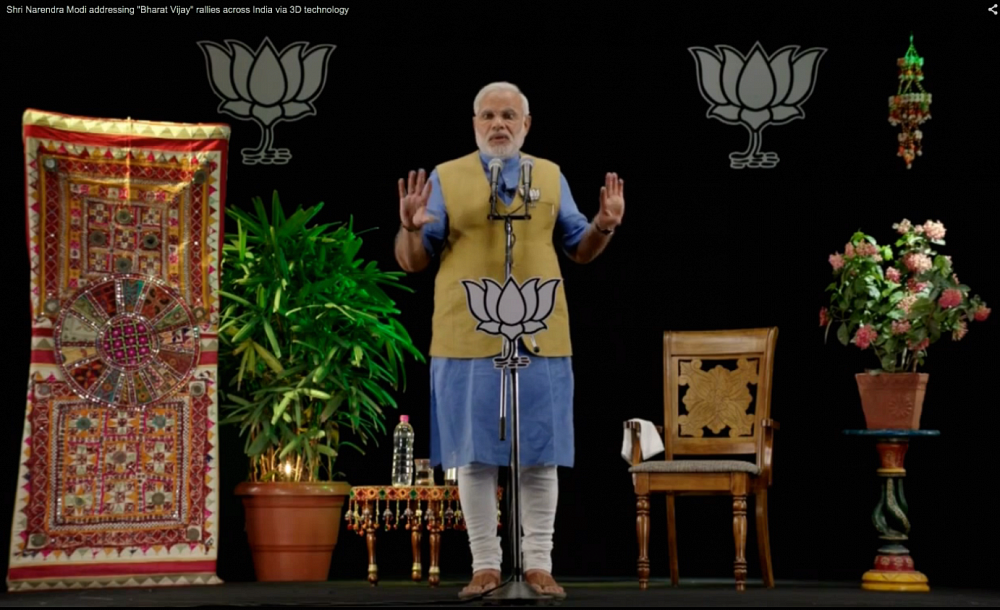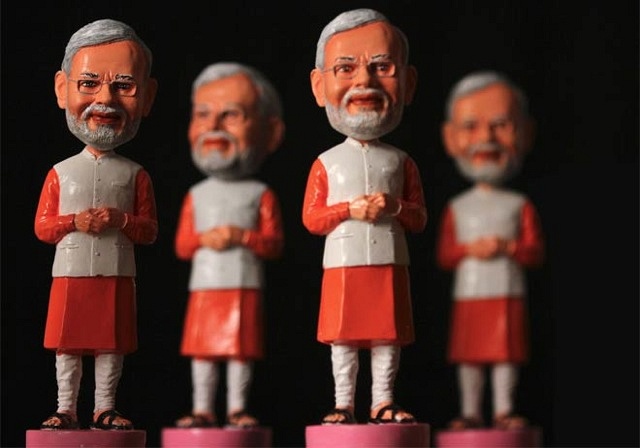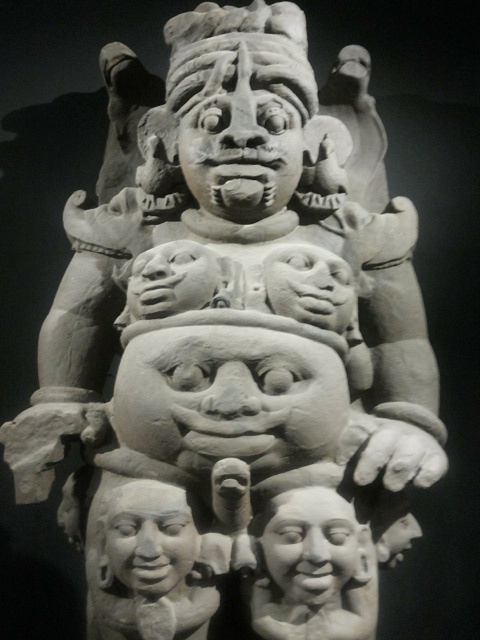Rupa-Pratirupa: The Body in Indian Art is one of the most ambitious shows of historical Indian art to be mounted in recent times. Naman Ahuja, scholar and curator, first put together the exhibition last year, in Brussels, as part of the 2013–2014 Europalia festival. For that iteration, Ahuja managed not only to bring many great pieces from India to Belgium, but he also convinced museums and collectors in the West to lend rare South Asian objects. When the show was reassembled at the National Museum in New Delhi earlier this year, many of these foreign-owned pieces were not brought to India; presumably, there were fears of the pieces never being returned, and the perceived risk of the transportation, and to such an inclement climate (!). Still, Ahuja was up for the challenge and he scoured museums all over India and actually replaced the ‘missing’ works with what he thought were equal or even better examples to bear out his various arguments and timelines.
The result was a big show with a grand scope, the kind that has not been seen in India for quite some time. It spanned eight galleries, each thematically linked to another with a counterpart theme, so, for instance, the section about the body memorialized after death was linked to the section about the body made immortal, asceticism was twinned with desire, the cosmos with earthly actions, and so on. There was also a cyclical aspect to the show since a visitor could go through it either clockwise or counterclockwise, the idea being that one discovered things in two different sequences; in one direction the galleries took the visitors from “a celebration of the mundane physical body […] to the divine and philosophical” whereas in the other direction viewers got a stronger sense of “how much the metaphysical has informed our daily lives.” The timespan the exhibition relayed was also massive, from a lost-wax animal head dating from the second or first millennia BC to lithographic prints from the early twentieth century, plus some contemporary art inserted as riffs on the ideas at play.
One of the criticisms of the show was that it was too big: it included too many objects and asked the viewer to take in too much. Another problem was that, unless you were an expert already, the labels and wall texts were not informative enough, they did not quite invite you to explore the ideas around which the show was built. Ahuja conducted several docent tours of the exhibition, speaking informally and peppering his talk with anecdotes and digressions, and it is here that Rupa-Pratirupa truly came to life for many people, with the insertion of a living, speaking body amidst the statues and paintings. As is to be expected, Ahuja is hugely knowledgeable, but he also wears his scholarship lightly and humorously. Walking through the galleries with him is almost like an elaborate, understated performance art piece with fantastic historical props.
Some pieces that remain in my memory: the marble Bhairava-Shiva from eleventh-century Gujarat, an anatomically precise sculpture of an old man, dressed in transparent rags, draped in skulls and a corpse; a nineteenth-century bronze frame from Andhra Pradesh that would have stood in the center of a temple with a mirror inside—the only god you will see is the one residing in you; a sandstone of four mother-goddess figures from eighth- or ninth-century northern India; a print of Gandhi with multiple arms confronting a British officer as a death god from the 1920s. There was a lot more: three-dimensional and two-dimensional works, precisely and realistically rendered or completely abstract, a mind-boggling variety of materials for a fantastic variety of stories, images, and beliefs.
At the end, whether dissatisfied or pleased with the exhibition, the visitor came away with a huge sense of the body at multiple levels, its myriad meanings in different Sub-continental cultures, its branches and its echoes.
The exhibition closed in early June, when, around the India Gate area just outside the museum, during one of the worst heat waves of the last half-century, a new government settled into power in the red and beige buildings designed by Edwin Lutyens and Herbert Baker for New Delhi. The Prime Minister is one Narendra Damodardas Modi. Many in India think this man should have been in jail or, at the very least, politically marginalized, for the massacre of Muslims in 2002 in the state of Gujarat, when he was chief minister of the state. Instead of facing jail time or ignominy, this man has now charged out of his provincial redoubt and actually taken over as prime minister of the country.
Modi and his Hindu nationalist party, the BJP, succeeded in the recent national elections essentially via a single ‘product’: they sold the mythical leader figure of a Narendra Modi, who would cleanse the administration of corruption and deliver much-needed development to a people starved for progress. While in the past the BJP and the other national parties projected parliamentary teams with a potential prime minister as just a first among equals, this time Modi’s message was “it doesn’t matter who my party’s local candidate is—every vote you give to him is a vote for me.” In a meticulously executed strategy, Modi’s face and persona were projected across the country in a media blitz. Everywhere you looked, you saw the man’s face on billboards, or towering cutouts of his whole figure; on television, the BJP ads were constant, outspending the other parties by some margin, and their message, again, stressed the primacy of one person—“This time, a Modi Government!” (and not a “BJP” government, as would have been expected earlier); in print and on social media, too, the “orange party” made sure their leader’s presence loomed larger and more frequently than all the competition combined. Modi’s right-hand man, Amit Shah, referred to the campaign as “carpet-bombing,” reportedly backed by the biggest businesses in India, who were tired of the incumbent government placing too many environmental restrictions on them, as well as of the low returns they were getting on vast amounts of bribe money. An educated guess is that the Modi-BJP campaign spent more money than Barack Obama did in his first election bid.
Backed by a huge budget but also by dedicated teams of young, tech-savvy volunteers who mapped each constituency and social segment in great detail, and with massive stamina that saw him attend hundreds of rallies across the country (flying back to his base in Gujarat every single night, apparently to continue administering the state overnight), Modi carried out a relentless campaign between October and mid-May, when the results were declared. Unlike his chief opponents, Modi is also a very effective demagogue both in Hindi and his native Gujarati—and he used this ability to maximum effect, theatrically mimicking his opponents, pausing for dramatic effect, raising his voice when making statements or lowering it as he dripped sarcasm. Modi changed his clothes often, in the hot summer days even several times a day, and managed to project a persona that seemed to fit enough voters’ picture of an ideal leader. As if this was not enough, many of Modi’s speeches were broadcast simultaneously in different places on large screens, and he sometimes even appeared before the crowds as a hologram. His body stiff and pillar-like, dressed in clothes with a controlled shine, employing gestures that ranged from the heroic and martial to the kind made during street arguments. As Modi cut his swathe across India, many sophisticates found his act crude, almost like that of a child or a bad actor playing a great leader. But it worked.
Between his media blitz and the confident, if somewhat staccato and abrasive, tub-thumping, Modi managed to convince enough people to forget the 2002 violence and believe the narrative he was selling of the great growth he had brought about in Gujarat. Among the things Modi managed to sidestep were some difficult questions about his claims about the economic glory of his “Gujarat model,” where people pointed out that the growth primarily centered on increased profits for large corporations, while the figures connected to health, education, and child mortality for the poor in Gujarat told a much less glorious story, that of missing development as opposed to galloping growth. That said, many people voted for Modi precisely because he was considered responsible for the 2002 attacks and for having “put those Muslims in their place.” On the other hand, young Muslim voters in the critical states of Uttar Pradesh and Bihar seem to have disobeyed their local religious leaders and also voted for Modi, so desperate were they for some betterment of their economic prospects.
During the election campaign, Modi and the BJP proclaimed their projected victory as a coming tsunami. In retrospect, the election results were more like a river spilling over its banks and overflowing in a certain direction. A clear majority in the Indian parliament is 272 seats and the BJP under Modi have garnered 282 (334 with their allies)—a solid but not overwhelming majority. Though this is the first time in many elections that a single party has a clear majority, in terms of vote share the BJP have managed what is average for a winning party, around 33.5 percent. In the last elections in 2009 the losing BJP had 114 seats in parliament with a vote share of around 19 percent; this year, the previous ruling party, the now decimated Indian National Congress, won only 44 seats but their vote share is 20 percent. The BJP has treated this dance of first-past-the-post statistics and parliamentary district boundaries as irrelevant, referring to their victory as a “landslide” and—yes, again—the tsunami they had promised.
Much as the BJP and its cheerleaders in the media might try and project this as a massive but ‘normal’ victory for a right-of-center party, and as the arrival of a long-overdue corrective rebalancing after liberal excesses, there are many fears that that will not go away and some that are being realized already, not three months into the new government’s first term. A politician accused of participating in violence against Muslims that helped the BJP win in UP State has been made a minister; a former army chief known for his draconian attitude toward the border areas has been put in charge of the volatile north-eastern states; Amit Shah, Modi’s lieutenant, implicated in many nasty cases ranging from police executions to stalking women has now been made the party chief of the BJP itself; an obscurantist who mixes up ancient mythology and proven historical events has been put in charge of the country’s premier history research institute with the brief of cleansing out the ‘Marxists’ and furthering the Hindutvaization of history.
This last appointment is further evidence that Modi and his cohorts have no understanding or interest in understanding the actual history or culture of India. Just as Modi and the BJP strove to hack away all extraneous things in order to sculpt the monolith of Modi himself, now they will attempt to impose a version of ‘Hinduism’ that is a monoculture.
Modi and people like him do not understand what a show such as Rupa-Pratirupa explores so vividly. The multiplicity of belief, the diversity of worship, the parallels and the contradictions, the non-linear, the anti monolithic, the evidence of the impossiblity of a single hegemonic culture in the Sub-continent where male wombs produce female eggs, all of this is directly at odds with a man like Modi and everything he represents.
If the mirror frames found at the center of temples in Andhra Pradesh were supposed to negate ego and bring humility, for Modi it is all about the man in the mirror but in exactly the opposite way. Along with the mirror frame displayed in Rupa-Pratirupa was also a replica of a fifth- or sixth-century statue of Shiva that is still in worship in central India: from the body of a rotund Shiva, from his limbs and joints, sprout faces which, it is reckoned, represent the different signs of the Indian zodiac. Looking at the stature a few days after Modi’s ascent to power, a viewer could be forgiven for seeing not a god but the body of a monstrous despot sprouting open mouths ready to devour everything in his path.


